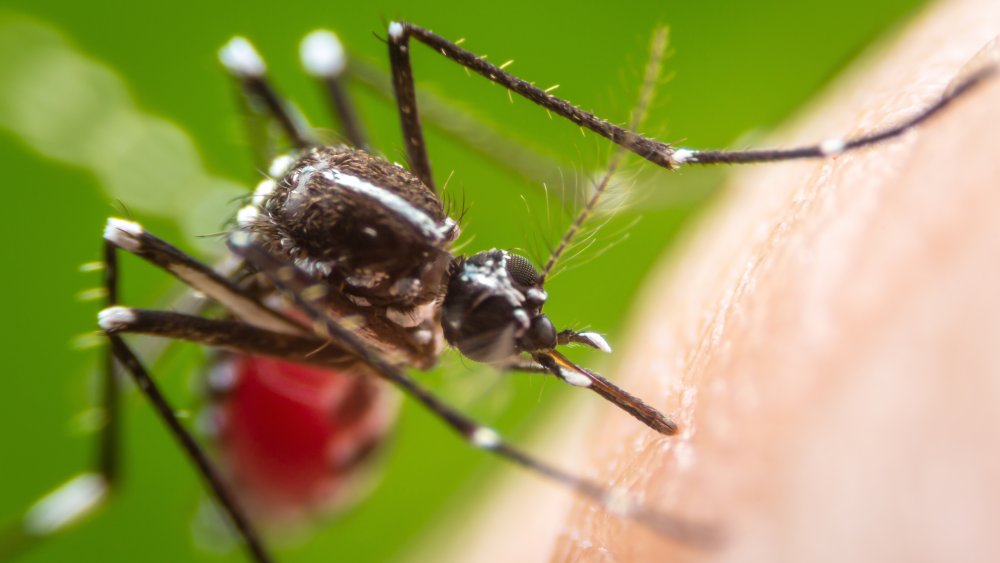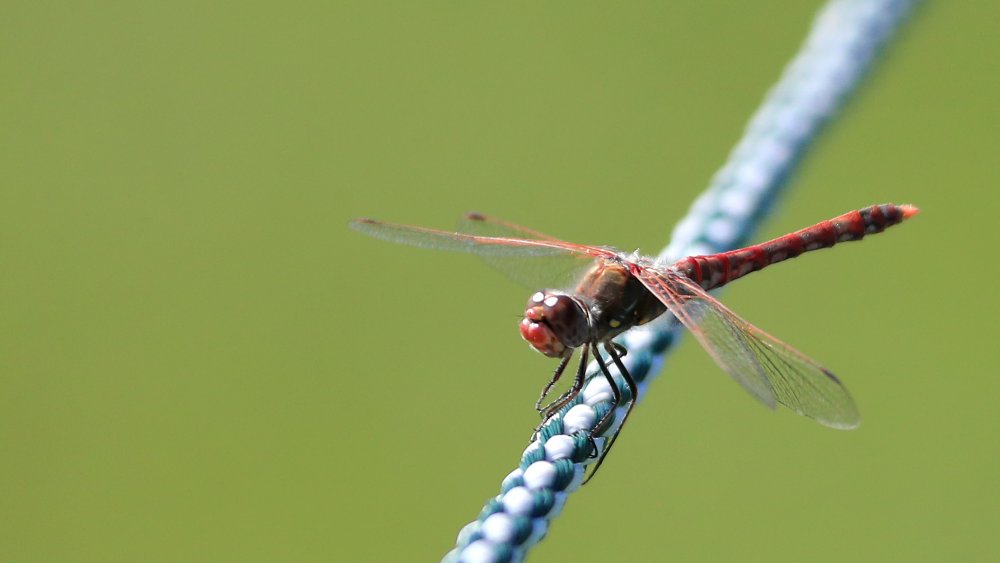The Surprising Trick To Keeping Mosquitos Out Of Your Yard
Mosquitos: they're nature's living pub darts. They're syringes that can have babies. They are, to put it bluntly, just the worst.
According to the Wall Street Journal, Americans spent nearly $170 million on insect repellant in 2015. That figure ballooned the next year when fears of the Zika virus came to the forefront of popular phobias. But if you're looking for a way to fend off the bloodsuckers without smelling like a chemical toilet, you might be interested to know that there's an all-natural remedy to this scourge: dragonflies.
Yes, dragonflies. They're not just for Rescue Rangers comic relief anymore. Dragonflies are remarkable predators, utilizing their incredible agility to track down and kill as many as a hundred mosquitos a day. They're nature's own anti-skeeter. Now, the tough part: how do you convince the hovering death machines to hang out near your pagoda?
Mosquitos don't stand a chance
There are two answers, by our understanding.
First off, you can start growing plants in your yard that attract dragonflies. Uplifting Today has more than a few options: swamp milkweed, a plant that grows in damp, swampy regions, is apparently like dragonfly catnip. You can also try meadow sage, cattail, arrowhead, and water horsetail. These additions should help draw in the majestic little dive bombers to your homestead, as, being a widespread variety of insect, they're never too terribly far away to begin with.
Option B is more complicated, but it's powerful. You could always piggyback on the work done Draper R&D in their DragonflEye Project. It's a very real cybernetics program which, according to Spectrum, genetically modified dragonflies to respond to implanted light pulses. Combined with tiny solar panels and sensitive electronics, they managed to devise a system by which dragonflies could be piloted via remote control. You're basically only separated from an army of subservient insect gyrocopters by research, mastery of the dragonfly genome, and several million dollars.
Or, again, you could just grow some milkweed. Your call.

